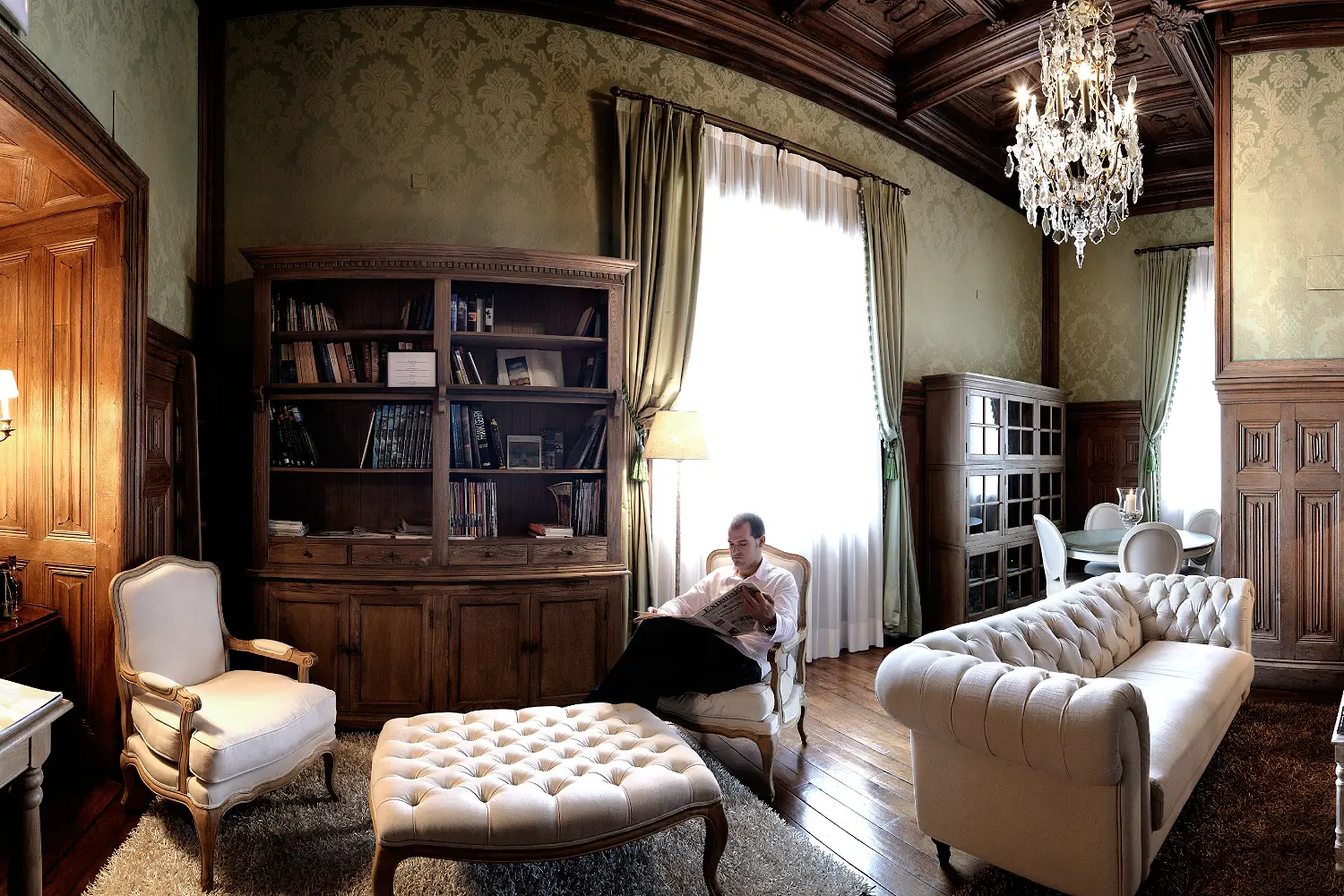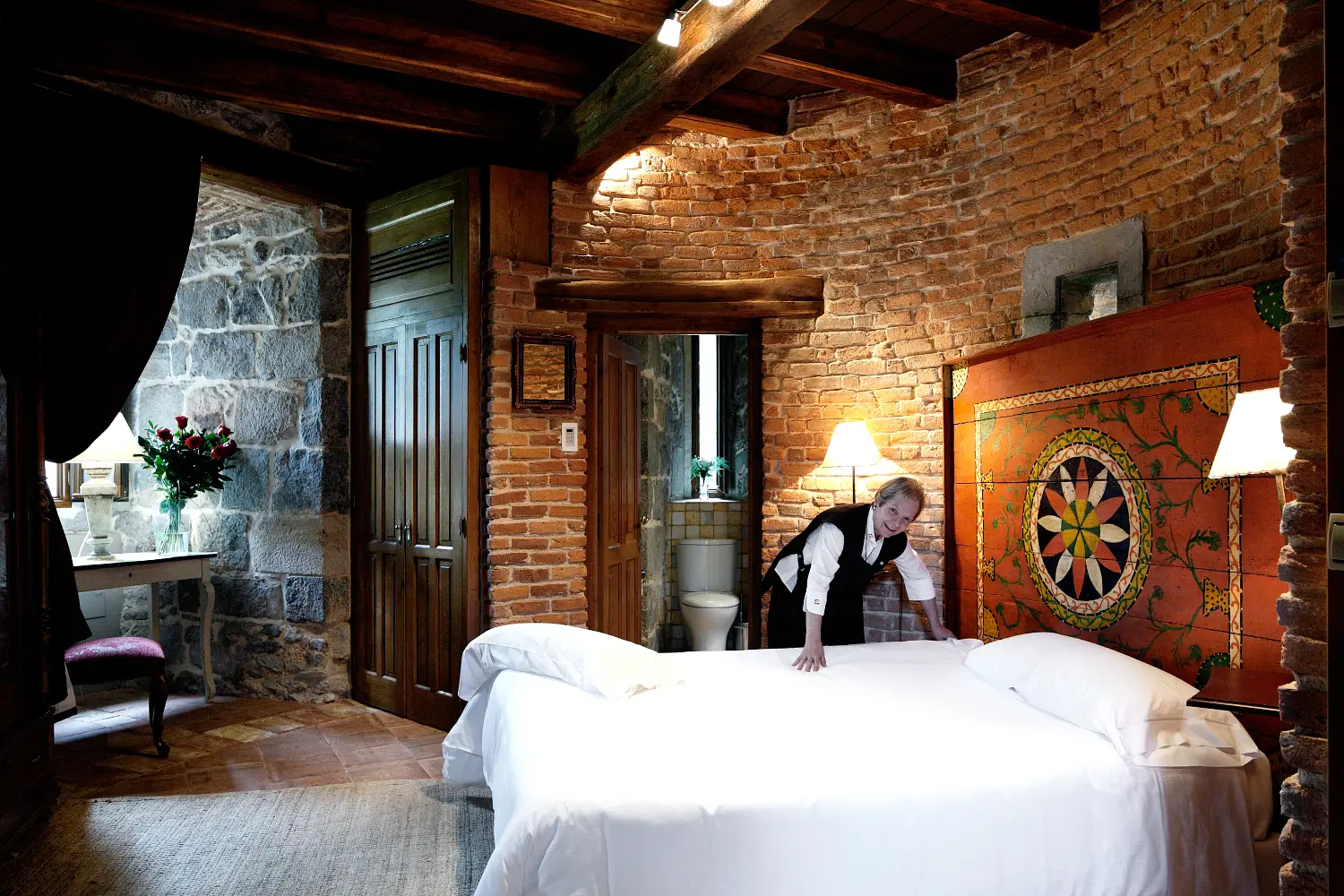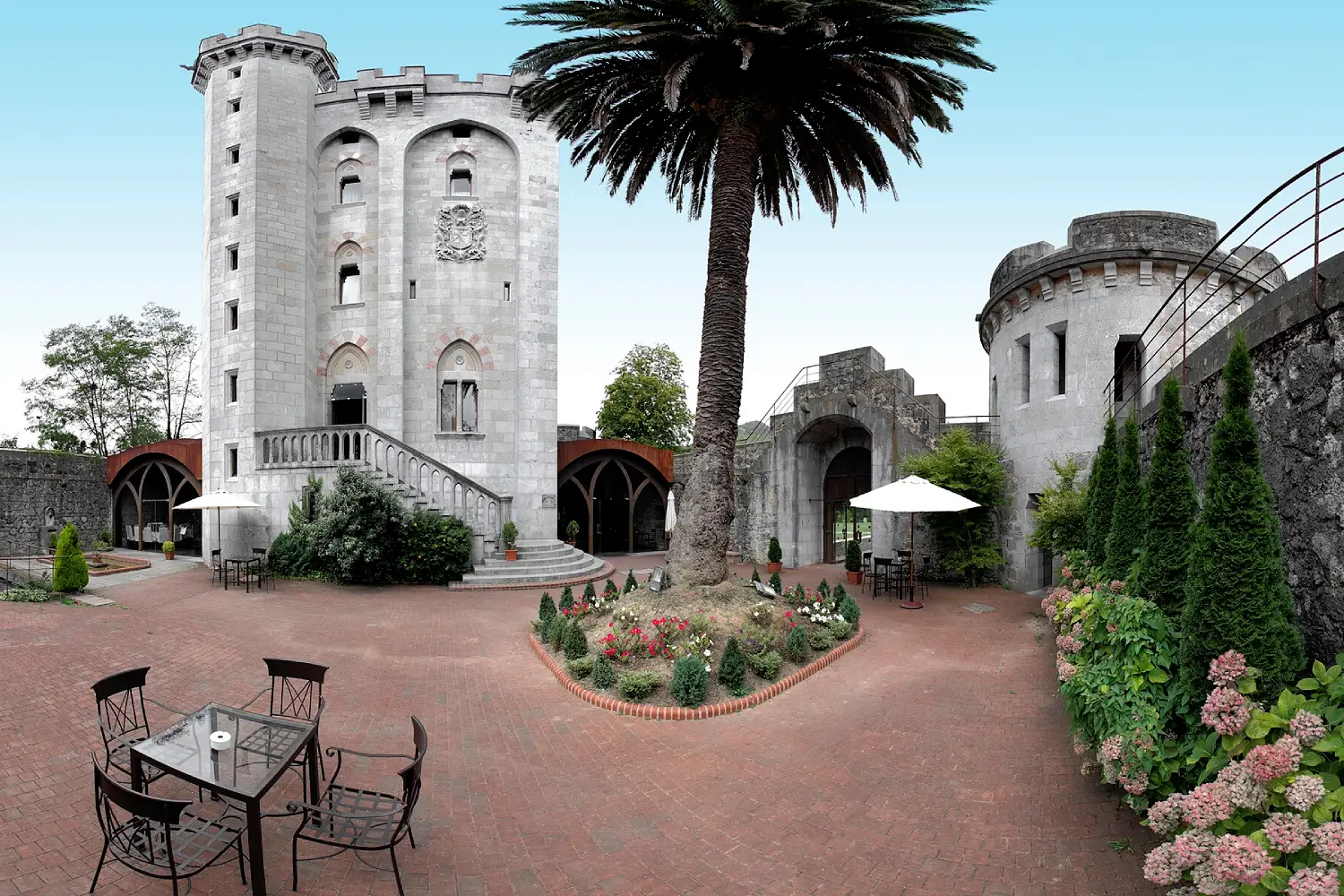The Castle
Predominant and majestic
Eugenio Bonaparte, Napoleon the III’s son, was named native of Biscay by the General Assembly of Biscay in 1856. Thanks to this, Arteaga tower, built in the 13th century, remained important for the future. Eugenia de Montijo, the Emperors wife, was Arteaga’s plot owner and she decided to rebuild the damaged castle, in order to show her gratitude for that honor.
Couvrechet, the Imperial Sites French architect, was responsible of the project until his death. Then Ancelet, who was also a French Royal Family architect, kept the responsibility. Both of them built a new tower, since the old one didn’t fit the needs of an imperial residence. Only the external walls remained from the old tower, where a façade was built.
That way, a neo-medieval palace was built in Arteaga’s exceptional area. It was a neogothic fortified tower inspired in French gothic architecture. It was also influenced by Romanticism recovery. It still keeps that predominant and majestic image above Gernika’s estuary. It’s an imperial residence in a privileged landscape.
Out of this castle, Garbiñe Azkuenaga has created a stunning hotel, masterfully combining period furniture with contemporary design. Spend your days exploring the surrounding area: cliffs, rivers, marshland and meadows. In the evening, enjoy a superb dinner in the castle’s restaurant or a wine tasting in the well-stocked cellar.
A piece of France in Bizkaia
An imperial residence
Its architecture and all its dependencies, maintained in every detail, transport us to the France of the late eighteenth century with all modern day luxuries available, preserving the facade and distribution almost as they were then. The result: a residence, if anything, more imperial than that bequeathed the emperors themselves.







